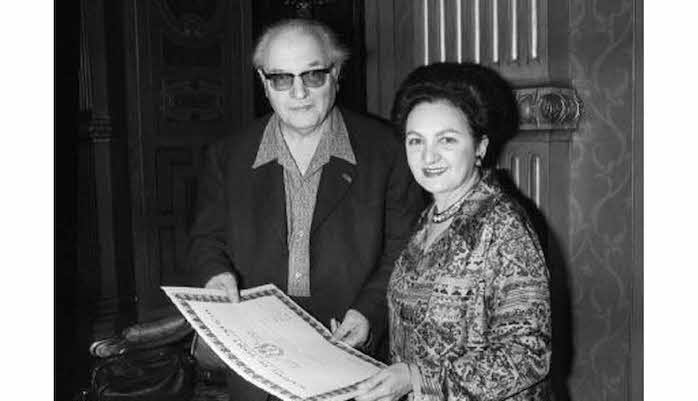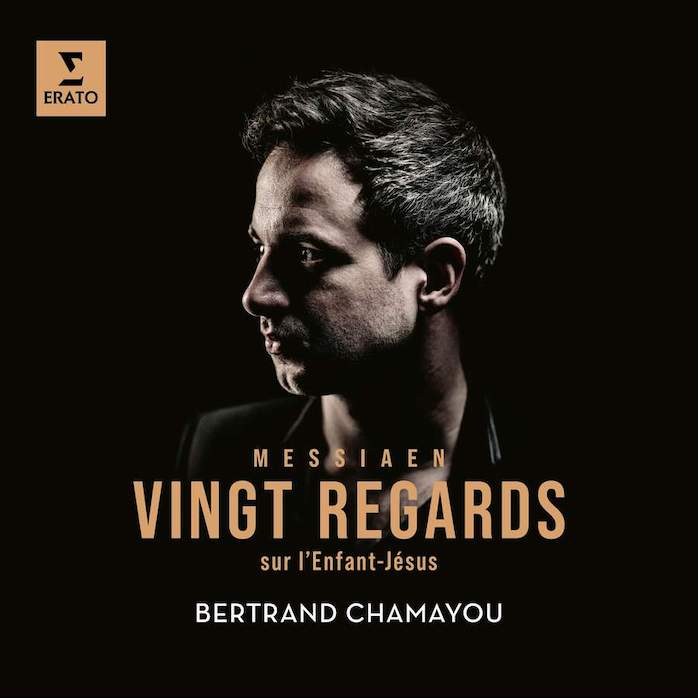Here we are in the third generation of pianists performing Messiaen. After Yvonne Loriod, then Beroff, Muraro, Aimard, it’s Bertrand Chamayou’s turn. For who ” the Twenty Looks at the Child Jesus are a veritable monument of the 20th century » and says that he discovered this huge score from an early age. Magnificent mark of humility to approach it on record, and in concert, only at that of maturity. A work in which is expressed the surprising modernity of Messiaen (Claude Samuel) as an irresistible attraction of the monumental. The interpretation of the French pianist is a model of fidelity to the text as of musical fervor.
This score, which he completed in 1944, is already a manifesto of Messiaen’s piano. By its specificity, its originality like no other. The composer has, in an interview book with Claude Samuel (”Olivier Messiaen’s Permanences Dialogues & Comments”, Actes Sud, 1999) gave some keys to understanding what characterizes his writing. It is made up of ” groups of chords giving the music an aspect of jewels, shimmering especially when combined with what he calls ” asymmetric enlargement », this phenomenon of widening, of sound amplification, which we also find in his symphonic works. He further states ” the simultaneous use of the extreme treble and the extreme bass of the piano » as the use of « rhythm cannon ” to ” percussion sounds ” and ” non-retrogradable rhythm » or even to « the combination of accelerando and rallentando “. And use ” strokes in contrary movements, both hands arpeggiating voluntarily against each other “. Added to this are the songs of birds, delicate inspirations, playful or talkative, consubstantial with his music. Finally, he insists on the role of silence. Above all, something more immanent runs through this fervent form of homage to the Child Jesus: spirituality. Which makes Bertrand Chamayou say: “ whether or not one believes in a God, mysticism, for those who know how to abandon themselves to it, nestles in the observation of nature, and can turn into a dizzying vertigo if one tries to consider the universe which surrounds us “. A fervor that floods the musical text and must preside over its execution.
The twenty pieces that make up the cycle were explained by Messiaen himself in the form of a ”Note from the author”, taken up in another book of interviews, this time with Antoine Goléa (”Rencontre avec Olivier Messiaen’ ‘, Slatkine, Geneva, 1964). We will borrow from this valuable analysis. The work is a ” contemplation of the Child-God of the manger », by ”Looks” which arise on him, of God the Father, of the Son, of the Spirit of joy, of the Virgin… It is made up of « pieces linked by 3 cyclical themes… the Theme of God, a theme of chords which gives rise to fragmentations or coagulations according to the method of the alchemists, and a Theme of the Star and the Cross “. It combines ”Looks” as such – 13 in number – and other sequences bearing more free titles (”The Exchange”, ”By Him everything was done”, ”Première communion of the Virgin”…). After a start in the pp to ppp register (I. ”Regard du Père”), the great chords of ”Regard de l’Étoile” (II.), or the sheaves of music from ”L’Échange” (III.), come with ”Regard de la Vierge” (IV.) sweetness and tenderness, where ” purity in music “. The songs of birds make their appearance in the ”Look of the Son on the Son” (V.). ”By him everything was done” (VI.) is a fugue filled with furious ostinatos, demanding an incredible grip, until an end of hammered chords. The birds, we find them in ”Looking from the heights” (VIII.), because these singers bend over the nativity scene from the sky. ”Look of the Spirit of Joy” (X.) is a ” vehement dance inspired by plainsong, a piece that Messiaen himself considered ” delusional “. ”Regard des Anges” (XIV.) is all flamboyant with its percussion sounds mixed with birdsong, to illustrate ” the amazement of angels “. In the sequence ”Le Baiser de l’Enfant-Jésus” (XV.), the music becomes a lullaby and a soliloquy in volutes of extreme high notes, resulting in a blinding light. The very ornate ”Regard du silence” (XVII.) offers in its last pages a ” multicolored and impalpable music, in confetti, in light jewels, in clashing reflections “. From the “Look of the Terrible Anointing” emanates a frightening majesty for man in the face of the divine. ”I sleep, but my heart is awake” (XIX.) is ” love poem, mystical love dialogue », a moment of immense sweetness. ”Looking at the Church of Love” closes the cycle, where development precedes exhibition, a daring step. It is a summary of the work in all its complexity and the processes that have been developed there, a glorious conclusion too, up to the sonic incandescence, like what we could call ” a vast and mighty cathedral (Antoine Goléa).

Olivier Messiaen and Yvonne Loriod, creator of Vingt Regards sur l’Enfant-Jésus ©DR
Bertrand Chamayou plays these pieces by putting all his heart, his intelligence and of course his formidable technique into them, whether in the power (nos VI, X, XIV, XVIII) as in the infinitely soft (nos IV, XV, XIX ). From where is born this ineffable emotion and this feeling that the complexity is evacuated little by little, as exceeded, with regard to a form of balance between profusion and discretion, springing and lull, almost a kind of obviousness. ” The result is a feeling of grace and power, the force of which seems to destroy everything in its path. “, he remarks. His Steinway D sounds grandiose in all registers by a judicious use of the damper pedal.
He precedes and concludes this Everest with a few pieces composed in homage to Messiaen. By way of introduction and postscript. We first hear three pieces written in 1992, shortly after the death of the master: ”Rain Tree Sketch II” by Takemitsu, painful music, ”Live Ear Emission!” by Anthony Cheung (*1982), lively piece, and ”Bells of farewell, and a smile…” by Tristan Murail (*1947), one of Messiaen’s students, adorned with crystalline sounds. After Les Vingt Regards, comes a short piece by Kurtág ”…humble regard on Olivier Messiaen…” (1993), as brief as it is moving, and finally by Jonathan Harvey (1939-2012), ”Tombeau by Messiaen for piano and digital audio tape” (1994), music ” apocalyptic », according to Chamayou, where the superimposition of the live piano and the tape offers sounds that are curious to say the least, but where we find the famous simultaneous rapprochement, so dear to the great French musician, of the low and high registers of the piano. One can wonder about these additions, not essential to listening to the main work. In any case chosen with tact and concern for an offering to the illustrious author for the 30th anniversary of his death.
The sound recording at the MC2 in Grenoble provides an airy atmosphere and an analytical sound. The instrument, placed in a central and frontal position (bass on the left of the spectrum, treble on the right), when played in all its intensity, sounds almost orchestral: majestic and precisely resonant bass, nicely percussive extreme treble, for a striking sound environment.
Text by Jean-Pierre Robert
More informations
CD available on Amazon
Other articles that may interest you on ON-mag and the rest of the web
We want to say thanks to the writer of this article for this awesome content
Bertrand Chamayou plays Twenty Looks at the Child Jesus
Explore our social media profiles and other related pageshttps://nimblespirit.com/related-pages/

